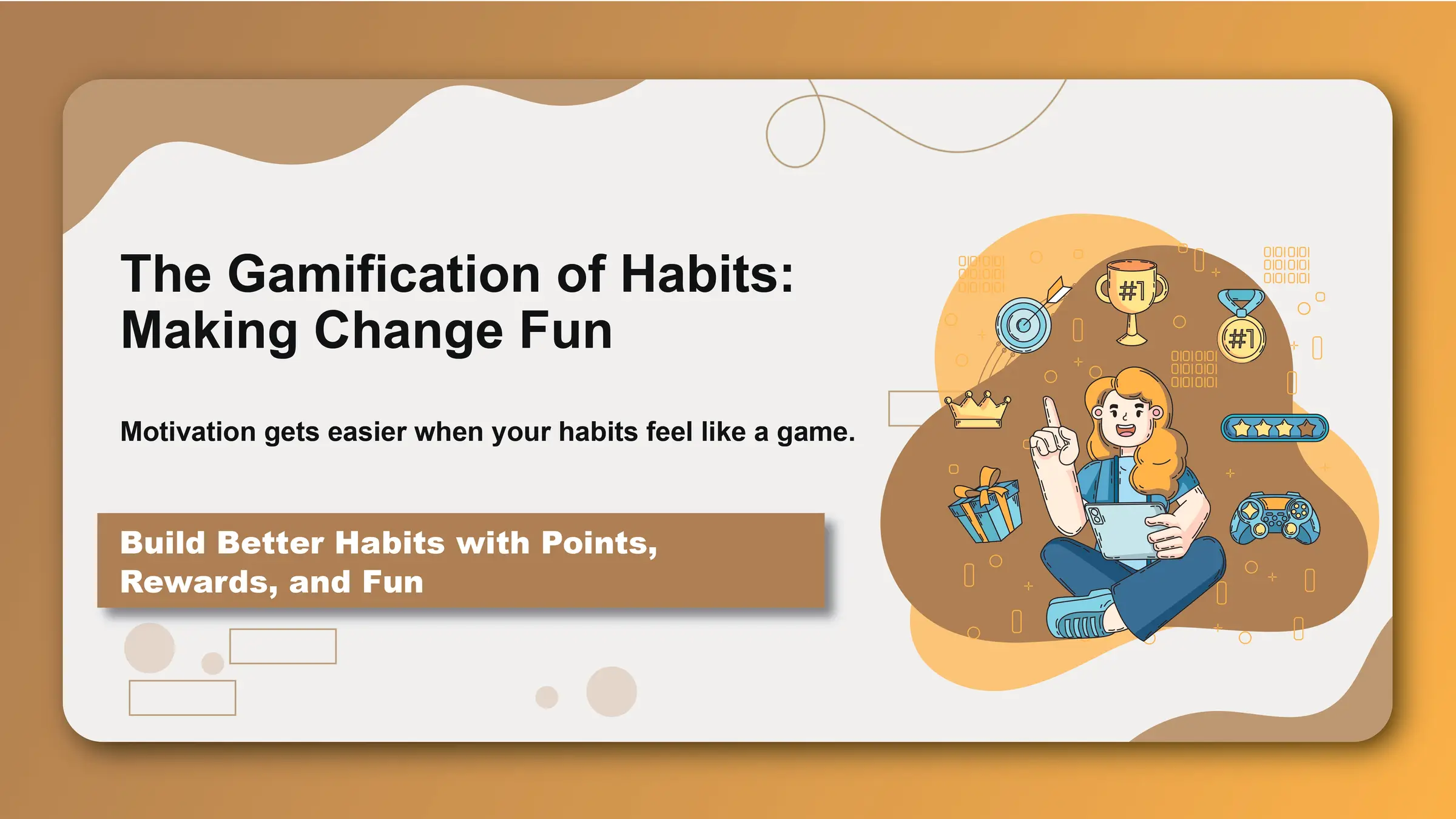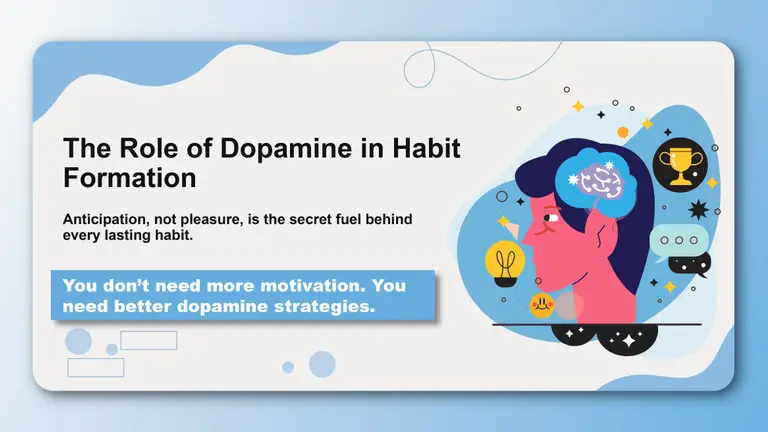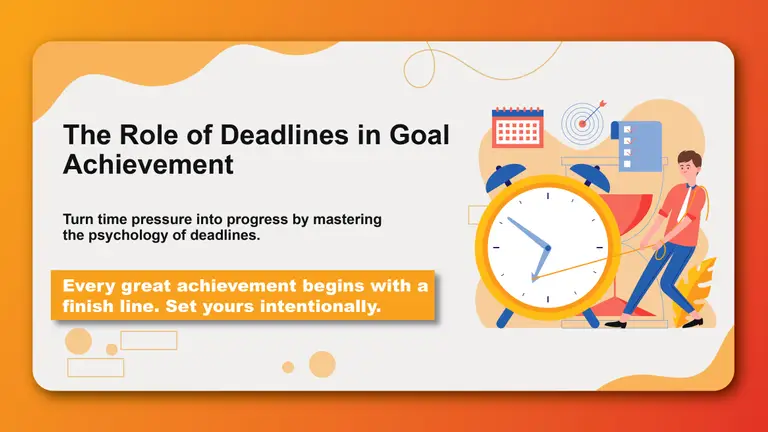What if building good habits felt as engaging as playing your favorite game? What if you looked forward to your daily routines with the same excitement you feel when starting a new level or quest? This isn't just a fantasy—it's the power of gamification, the strategic application of game design elements to non-game contexts like habit formation.
Gamification works because it taps into fundamental human motivations that make games so compelling: the desire for achievement, progress, competition, and rewards. By applying these same principles to habit building, you can transform the often mundane process of behavior change into an engaging, enjoyable experience that you actually want to participate in.
The science behind gamification reveals why games are so effective at maintaining engagement and motivation. Games provide clear goals, immediate feedback, progressive challenges, and regular rewards—all elements that research shows are crucial for successful habit formation. When you gamify your habits, you're essentially creating a personal game where the prize is a better life.
However, effective gamification isn't just about adding points and badges to your routine. It requires understanding the psychology of motivation, the principles of good game design, and how to apply these concepts in ways that support rather than undermine your actual goals. The best gamified habit systems feel natural and integrated, not gimmicky or forced.
This guide will explore how to thoughtfully gamify your habits to make behavior change more engaging and sustainable. Whether you're struggling with motivation, looking to add more fun to your routines, or simply curious about how game design can improve your life, you'll discover practical strategies for turning your habit-building journey into an enjoyable game.
The Psychology of Gamification
Why Games Are So Engaging
Clear Goals and Objectives Games provide crystal-clear objectives that tell you exactly what you need to do to succeed. This clarity eliminates the confusion and ambiguity that often plague habit-building efforts.
Immediate Feedback Games offer instant feedback on your actions, letting you know immediately whether you're succeeding or need to adjust your approach. This rapid feedback loop accelerates learning and maintains engagement.
Progressive Difficulty Well-designed games start easy and gradually increase in difficulty, ensuring you're always challenged but never overwhelmed. This progressive structure maps perfectly onto habit development.
Intrinsic Motivation The best games tap into intrinsic motivation—the satisfaction that comes from mastery, autonomy, and purpose—rather than relying solely on external rewards.
Game Design Principles for Habits
Flow State Creation Games are designed to create flow states—periods of complete absorption and optimal performance. Habit gamification can recreate these conditions for behavior change.
Meaningful Choices Games provide meaningful choices that affect outcomes, giving players a sense of agency and control that's crucial for sustained motivation.
Social Connection Many games incorporate social elements that create accountability, competition, and community—all powerful motivators for habit formation.
Narrative and Progression Games tell stories and show clear progression, helping players understand how their actions contribute to larger outcomes and personal growth.
Elements of Effective Habit Gamification
Points and Scoring Systems
Point Assignment Strategy Create a point system that reflects the true value and difficulty of different habits, not just their completion.
Implementation Examples:
- Easy daily habits: 1-2 points
- Moderate challenges: 3-5 points
- Difficult or important habits: 6-10 points
- Bonus points for consistency streaks
- Penalty points for missed days (optional)
Scoring Complexity Balance simplicity with meaningfulness—your scoring system should be easy to understand but sophisticated enough to maintain interest.
Quality-Based Scoring Consider awarding points based on the quality of habit performance, not just completion:
- Basic completion: Base points
- High-quality performance: Bonus points
- Exceptional effort: Premium points
- Perfect execution: Maximum points
Levels and Progression
Leveling Systems Create clear levels or stages that represent your progress in habit development.
Level Structure Examples:
- Novice (0-30 days): Building consistency
- Apprentice (31-90 days): Developing skill
- Skilled (91-180 days): Optimizing performance
- Expert (181-365 days): Mastering the habit
- Master (365+ days): Maintaining excellence
Progression Milestones Define specific milestones that mark significant progress in your habit journey.
Milestone Categories:
- Streak milestones (7, 30, 100 days)
- Performance milestones (quality improvements)
- Skill milestones (new techniques mastered)
- Impact milestones (measurable life improvements)
Achievements and Badges
Achievement Design Create achievements that recognize different aspects of habit development, not just completion.
Achievement Types:
- Consistency Achievements: Perfect weeks, months, or streaks
- Quality Achievements: Excellence in performance
- Improvement Achievements: Getting better over time
- Challenge Achievements: Overcoming obstacles
- Discovery Achievements: Learning new techniques or insights
Badge Systems Design meaningful badges that represent real accomplishments and growth.
Badge Categories:
- Foundation badges for establishing basic habits
- Mastery badges for achieving excellence
- Resilience badges for overcoming setbacks
- Innovation badges for creative approaches
- Leadership badges for helping others
Challenges and Quests
Daily Challenges Create daily challenges that add variety and engagement to your routine.
Challenge Examples:
- "Perfect Form Friday": Focus on quality over quantity
- "Mindful Monday": Add mindfulness to all habits
- "Social Saturday": Include social elements in your habits
- "Experiment Wednesday": Try new approaches or variations
Long-term Quests Design longer-term quests that span weeks or months and require sustained effort.
Quest Structure:
- Clear objective and timeline
- Multiple stages or checkpoints
- Escalating difficulty
- Meaningful rewards
- Story or theme integration
Practical Implementation Strategies
Choosing Your Game Framework
RPG (Role-Playing Game) Approach Design your habit system like a role-playing game where you're the character developing skills and abilities.
RPG Elements:
- Character stats that improve with habit performance
- Skill trees that unlock new abilities
- Equipment or tools that enhance performance
- Storyline that connects habits to personal growth
Adventure Game Approach Structure your habits as an adventure where each day brings new challenges and discoveries.
Adventure Elements:
- Map of your journey with locations and destinations
- Treasures and rewards to discover
- Obstacles and challenges to overcome
- Companions or allies to help you
Competition Game Approach Create a competitive framework where you compete against yourself or others.
Competition Elements:
- Leaderboards and rankings
- Tournaments and seasons
- Head-to-head challenges
- Team-based competitions
Technology and Tools
Gamification Apps Use apps specifically designed for habit gamification, such as Habitica, Zombies, Run!, or Strides.
App Features to Look For:
- Customizable point systems
- Achievement and badge systems
- Social features and community
- Progress visualization
- Storytelling elements
DIY Gamification Create your own gamification system using simple tools like spreadsheets, journals, or basic apps.
DIY Components:
- Custom scoring systems
- Personal achievement definitions
- Handmade badges or tokens
- Progress charts and visualizations
- Personal narrative and story
Social Gamification
Community and Competition Incorporate social elements that add accountability and fun to your habit journey.
Social Features:
- Habit buddies or accountability partners
- Group challenges and competitions
- Progress sharing and celebration
- Mutual support and encouragement
- Community leaderboards
Family and Friend Integration Include family members or friends in your gamified habit system.
Integration Methods:
- Shared goals and challenges
- Family point systems
- Group rewards and celebrations
- Collaborative achievements
- Supportive competition
Advanced Gamification Concepts
Narrative and Storytelling
Personal Hero's Journey Frame your habit development as a hero's journey with challenges, growth, and transformation.
Story Elements:
- The call to adventure (deciding to change)
- Meeting mentors (learning from others)
- Facing challenges (habit obstacles)
- Gaining allies (supportive people and tools)
- Achieving transformation (becoming who you want to be)
Thematic Integration Choose themes that resonate with your values and interests.
Theme Examples:
- Warrior training for fitness habits
- Scholar's path for learning habits
- Artist's journey for creative habits
- Explorer's quest for new experiences
- Builder's project for skill development
Seasonal and Event-Based Gamification
Seasonal Challenges Create special challenges and events that align with seasons or calendar events.
Seasonal Ideas:
- New Year transformation challenges
- Spring cleaning and renewal quests
- Summer adventure and activity goals
- Fall preparation and skill-building
- Winter reflection and planning
Special Events Design special events that add excitement and variety to your routine.
Event Types:
- Habit marathons (intensive focus periods)
- Skill-building bootcamps
- Challenge tournaments
- Achievement celebrations
- Community events
Reward Systems
Intrinsic Rewards Focus on rewards that come from the activity itself rather than external prizes.
Intrinsic Reward Examples:
- Sense of accomplishment and progress
- Increased skill and capability
- Better health and wellbeing
- Enhanced self-confidence
- Deeper sense of purpose
Extrinsic Rewards Use external rewards strategically to maintain motivation, especially in the early stages.
Reward Guidelines:
- Keep rewards proportional to achievements
- Use rewards to enhance, not replace, intrinsic motivation
- Choose rewards that align with your values
- Avoid rewards that undermine your goals
- Focus on experiences rather than things
Common Pitfalls and Solutions
Over-Gamification
The Problem Making the game elements so complex that they overshadow the actual habits you're trying to build.
Solutions:
- Keep the gamification simple and focused
- Regularly review and simplify your system
- Focus on the habits, not the game
- Use gamification to support, not replace, intrinsic motivation
Game Addiction Becoming so focused on the game that you lose sight of your real goals.
Prevention Strategies:
- Set clear boundaries between game and reality
- Regularly assess whether the gamification is serving your goals
- Be willing to adjust or remove game elements that aren't helping
- Focus on real-world outcomes and benefits
Motivation Sustainability
Novelty Fade The excitement of the game wearing off over time as the novelty decreases.
Solutions:
- Regularly update and refresh your gamification elements
- Introduce new challenges and achievements
- Vary the types of games and systems you use
- Focus on developing intrinsic motivation alongside gamification
Dependency on External Motivation Becoming too dependent on game elements for motivation and struggling when they're not available.
Prevention Approaches:
- Gradually reduce reliance on external game elements
- Focus on building intrinsic motivation
- Use gamification as training wheels, not permanent solutions
- Celebrate progress and growth beyond game metrics
Design Flaws
Misaligned Incentives Creating game elements that incentivize the wrong behaviors or outcomes.
Solutions:
- Regularly audit your gamification system
- Focus on quality and consistency, not just quantity
- Make sure your game rewards align with your real goals
- Get feedback from others about your system
Complexity Overload Making the gamification so complex that it becomes a barrier rather than a help.
Simplification Strategies:
- Start with the simplest possible system
- Add complexity gradually as needed
- Regularly remove elements that don't add value
- Focus on the most important habits and goals
Creating Your Gamified Habit System
Assessment and Planning
Goal Alignment Ensure your gamification elements support your actual goals and values.
Assessment Questions:
- What habits are most important to you?
- What motivates you most effectively?
- What types of games do you enjoy?
- How much complexity can you handle?
- What social elements would help you?
System Design Plan your gamification system thoughtfully before implementation.
Design Considerations:
- Choose appropriate game elements for your personality
- Create clear rules and objectives
- Design meaningful rewards and achievements
- Plan for evolution and adaptation
- Include social elements if helpful
Implementation Process
Gradual Introduction Introduce gamification elements gradually to avoid overwhelming yourself.
Implementation Steps:
- Start with basic point systems
- Add simple achievements and milestones
- Introduce challenges and variety
- Incorporate social elements if desired
- Refine and optimize based on experience
Testing and Iteration Treat your gamification system as an experiment that you can adjust based on results.
Iteration Process:
- Test elements for 2-4 weeks
- Assess what's working and what isn't
- Make adjustments based on your experience
- Keep successful elements, remove unsuccessful ones
- Continuously refine and improve
Gamification can transform the challenge of habit building into an engaging, enjoyable experience that you actually look forward to. By applying game design principles thoughtfully and strategically, you can create a system that makes positive behavior change feel natural, fun, and sustainable.
The key is to remember that gamification is a tool to support your goals, not replace them. The best gamified habit systems feel integrated and meaningful, not gimmicky or forced. Start simple, experiment with different approaches, and focus on creating a system that truly serves your growth and development.
Whether you're a natural game enthusiast or someone who's never considered gamification before, these principles can help you create more engaging and effective habit-building experiences. The goal isn't to become a perfect player, but to use the power of games to become the person you want to be.
Ready to turn your habit-building journey into an engaging game? Start your gamified transformation with Habityzer and discover how making change fun can make it stick for life.



